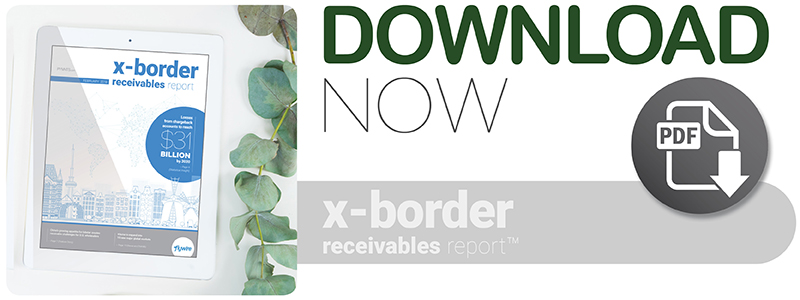For Cross-Border Receivables, Lobster Wholesalers Tighten Claws

A culinary luxury is facing increased demand in new, farther-flung markets, creating the need for efficiency and flexibility in cross-border receivables infrastructure.
Meanwhile, from eCommerce to financial services, to healthcare and education, new payment solutions are introducing a series of disruptions to the cross-border payment space. These developments are helping various players expand their footprints into new global markets and offer improvements to the way international payments are sent and received.
The PYMNTS X-Border Receivables Report, powered by Flywire, looks at the latest developments making waves in the international commerce world, where they are helping trading partners improve relationships by more quickly exchanging funds.
Worldwide happenings in the X-Border space
In Europe, several payment solutions broadened their reach, with the aim of benefitting both eCommerce businesses and its consumers.
Swedish eCommerce payment provider Klarna recently expanded into 10 global markets, including the U.S. and the U.K., through an existing partnership with banking solutions provider ACI Worldwide. With the integration in place, consumers can send and receive payments in their local currencies — and that convenience in turn puts merchants in a position to improve their conversion rates.
In addition to the latest payment development from Sweden, small- to mid-size businesses (SMBs) in the Netherlands also gained a tool for making global payments more efficient. Dutch bank ABM AMRO recently launched Franx, a new cross-border payments platform. The solution is intended to help SMBs by offering a multi-currency account and a single international bank account number for global payments.
Elsewhere, SMBs based in India recently got their own new solution to make and receive B2B payments. This offering, developed by Visa and B2B payment solution provider PayMate, works to automate payment processes such as accounts payable and receivable, electronic invoicing and cash flow management.
Data Dive: Global real estate
In 2016, buyers spent $426.8 billion on international real estate purchases, with $149 billion of that figure spent in the U.S. While global real estate is hot, some buyers are cooling to the sometimes cumbersome Know Your Customer (KYC) requirements in various markets. While these requirements are intended to help lenders offset risks, they are proving to be a headache for international buyers looking to purchase overseas properties.
The February Report includes a Data Dive examining the factors driving global real estate trends, including the challenges overseas buyers face when making international investments.
Lobster wholesaler tightens the claws on payments
Over time, the lobster has risen in stature from “the cockroach of the sea” to the top item on restaurant menus. Now, China too has developed a taste for the seafood and U.S. wholesalers are shipping the prized catch overseas at record levels.
But as China’s appetite for lobster surges, it also creates a receivables challenge for U.S.-based wholesalers on how to get paid for deliveries to overseas partners. For the February feature story, PYMNTS spoke with Stephanie Nadeau, owner of the Lobster Company in Arundel, Maine, about the forces driving lobster demand and how she keeps her company’s cross-border receivable cash flow steady.
About The Report
The PYMNTS X-Border Receivables Report, powered by Flywire, is your go-to resource for staying up to date on a bimonthly basis on the notable changes and shifts in the cross-border receivables market.
